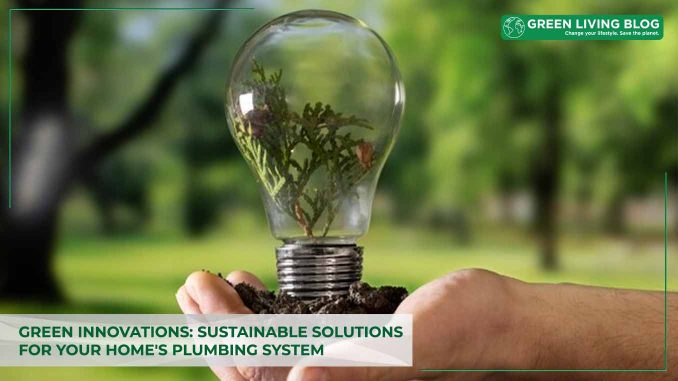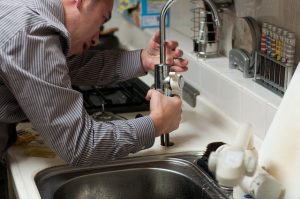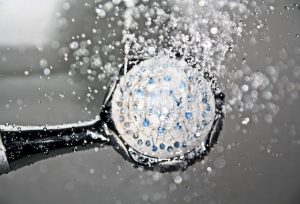
In recent years, green and eco-friendly housing solutions have passed a long way from being seen as a novelty to an absolute standard and a requirement for modern sustainable living.
This situation is brought by the fact that sustainable practices are not important solely for some altruistic effort to save the environment. Putting your household on eco-friendly foundations also produces tangible financial benefits and improves the lives of your family in very measurable ways.
Unfortunately, though – when trying to use these ideas and practices in their homes, most owners make the mistake of focusing too heavily on their energy bills.
Let’s look at how you can correct this mistake and give another important component of your household – your plumbing system – a much-needed eco-friendly overhaul.
Use eco-friendly cleaning practices

Aside from distributing water throughout your household, your plumbing network also plays a part in the waste management system. Do your best then to be mindful of what you are flushing down the toilet and throwing down the sink, and try implementing more eco-friendly cleaning methods.
For a start, stop using toxic cleaning products that are harmful to the environment and that can damage your pipe network as well. Instead, you should move to biodegradable products. Processing waste before flushing and recycling/reusing certain items can help you avoid dangerous clogs.
Use low-flow fixtures and toilets
Things like low-flow faucets, low-flow showerheads, and low-flow toilets are all designed to reduce the volume of water you are using daily without sacrificing their performance. Speaking in cold numbers, low-flow faucets can shave as much as 40% of your annual water consumption.
When combined with other items we have mentioned they can have a considerable impact on your utility bills. If you are ready to invest more money and push this idea even further, you can consider using a steam shower that takes only 4.5 litres of water to create a pleasant half-hour spa experience.
Keep your plumbing network well-maintained

That means you need to keep a very close eye on even the smallest signs of trouble and be quick to react whenever you notice something’s off. Also, be sure to perform regular maintenance duties and upgrade your utilities when they start losing efficiency.
For instance, the average lifespan of hot water systems clocks at around 10 years. If your home installations are living through their senior years, don’t wait for them to stop working at all. Getting in touch with professional hot water service and upgrading your home setup will save you a lot of unnecessary issues and expenses down the road.
Insulate the exposed pipes
In short, keeping the exterior elements of your pipe network exposed to cold and frost can cause water to freeze and cause severe damage to your plumbing system. And even if you avoid this grim scenario, the water temperature will still drop during winter months, and you will need to spend more energy to heat it.
So, make sure that all exposed pipes are properly insulated with materials like cellular glass, glass wool, flexible elastomeric foams, and even traditional, rigid foam. The good news is that this is a very simple wrap-up job, so the upgrade is well within your Do-It-Yourself reach.
Use sustainable water heating solutions

Your efforts to keep your household’s water consumption more optimized don’t prevent you from doing something about energy as well. Water heaters account for 17% of one household’s total energy consumption which is a lot. Well, it is good to know then that you have several solutions at your disposal.
First, you can consider installing a tankless water heater that heats water only, on-demand when in use. Second, you can use heat pumps that extract heat from the surrounding air and use it to heat water. And if you are ready to invest more, you always have the option of subsidized solar panels.
Consider the idea of water recycling
Last but not least, we need to remind ourselves that the vast majority of water we use daily is used for utility purposes. Using fresh water for these chores is a horrible waste. So, if you want to keep freshwater consumption under control, start putting more effort into greywater recycling.
The water used by the dishwasher, clothes dryer, and washing machine is perfectly suitable for purposes like flushing the toilet or cleaning the floors. If you really want to put an end to this issue, you can set up your rainwater harvesting system and use it to conserve even more water, reducing your bills in the process.
Wrapping-up
Well, we hope these couple of suggestions gave you a solid idea about how you can keep your plumbing system in good shape while also reducing the utility and energy bills of your household – try to implement as many of these measures as possible. Sure, some of them require that you spend more money than others, but all of them can recoup your investments further down the road. So, don’t miss this opportunity to do something good for the environment and put your home on a more sustainable foundation. When you are moving in the right direction every step you make is a step forward.
Author bio: Marie Nieves is a passionate blogger with an eye for design, a flair for storytelling, and a love for culture. She contributes regularly to various blogs and online magazines, all while satisfying her wanderlust by exploring states and countries near and far.
![]()
Author Profile

- Eco Warrior by day, Eco Blogger by night trying to get the eco balance right.
Latest entries
 EnvironmentJuly 9, 2025Does Double Glazing Help Increase Your EPC Rating?
EnvironmentJuly 9, 2025Does Double Glazing Help Increase Your EPC Rating? Green LivingJune 30, 2025Herbal Tea for Insomnia: Your Guide to Natural, Sustainable Sleep Solutions
Green LivingJune 30, 2025Herbal Tea for Insomnia: Your Guide to Natural, Sustainable Sleep Solutions EnvironmentJune 24, 2025What are the most energy-efficient Home Upgrades in 2025?
EnvironmentJune 24, 2025What are the most energy-efficient Home Upgrades in 2025? EnvironmentJune 23, 2025Eco-Friendly Paper Straws: A Small Switch That Speaks Volumes for your Brand
EnvironmentJune 23, 2025Eco-Friendly Paper Straws: A Small Switch That Speaks Volumes for your Brand





Leave a Reply
You must be logged in to post a comment.